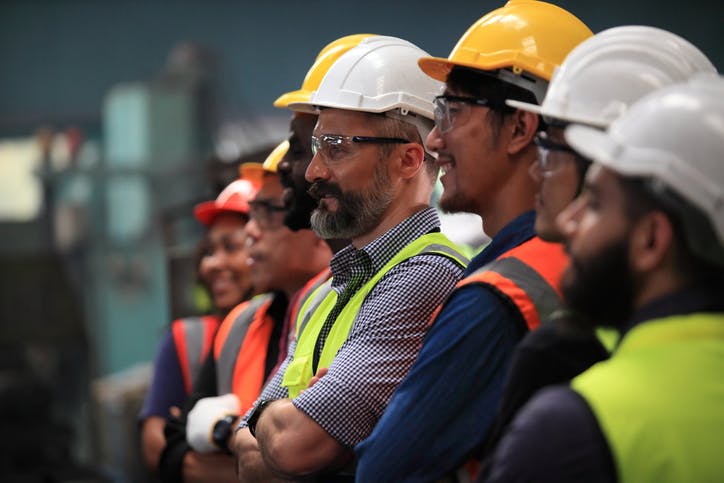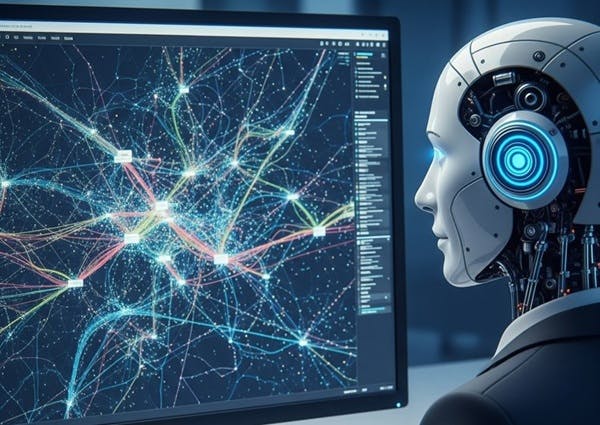A growing number of companies running field operations on critical infrastructures (energy, telecommunications, construction, …) are today experiencing the immense power of Visual AI for field job quality control automation. This technology not only utilizes visual data to monitor the state of the infrastructure itself but also enhances how this data is processed and analyzed.
Indeed, just like humans, physical assets have a lifespan. Consistent monitoring can prolong their functionality, whereas neglect accelerates their decline and eventual failure.
As the state of infrastructures is essential, stringent predictive maintenance is not desired, it’s demanded. No organization wants to be responsible for a faulty building or defective installation, given the severe economic & financial repercussions and the potential risk to human lives.
All organizations recognize this, and some have chosen to implement Visual AI to answer this need. They are carrying out systematic observations and recordings to monitor the operational status, health, and performance of physical assets – this is called asset lifecycle management.

Using Visual Artificial Intelligence for Asset Lifecycle Management
For certain infrastructure companies, the need for maintenance is still detected via on-site manual audits, organized randomly. Beyond an obvious lack of efficiency, this approach does not define where to prioritize maintenance operations.
For some years now, AI has also brought its share of innovation into this very specific business area. With visual AI, companies can now enjoy faster and more reliable diagnostics of their infrastructure health, maximizing the longevity of physical assets.
Now, let’s see how it happens concretely in the field:
Every time an engineer works on a physical asset and takes photos on their smartphone, the visual AI in the app employs object detection algorithms, combined with machine learning models, to accurately identify any defects.
It then provides real-time feedback by highlighting damaged areas and recommending immediate corrective actions to prevent further deterioration. It also automates and enhances the accuracy of asset inspections.
- Real-time Health Scoring: Utilizing computer vision, the AI assigns health scores to assets based on detected issues at each site visit, regularly updating these to guide maintenance decisions and prioritize interventions.
- Predictive Maintenance: Using data analysis, Visual AI tells you the state of your infrastructure in real-time. It makes you aware of potential failures and repair needs, allowing you to proactively plan for maintenance, minimize downtime, and reduce costs.
- Documentation and Compliance: All findings and activities are automatically documented, with natural language processing aiding in analyzing textual data within reports, ensuring compliance with standards, and facilitating audits with a comprehensive, searchable record. It also allows damage to be traced back to the responsible party, who will be liable to go on site and correct the anomalies.
With visual AI, organizations can enjoy a more robust and stringent approach to asset lifecycle management. It’s easier, quicker, and more accurate than any traditional method. It’s a seamless process that can cut costs, enhance safety, and maximize operational efficiency – all conducive to growth.
AI versus traditional method
If you look at the table below, you’ll notice the disparity in efficiency and efficacy between using visual AI and traditional methods.
Proactivity
- Traditional Method: reactive. Waits for equipment to fail before responding
- Visual AI: Proactive. Uses asset health predictive analytics to fix problems before they become serious.
Efficiency and Precision
- Traditional Method: Time-consuming and prone to human error.
Visual AI: Automates quality control and provides consistent high-precision across all monitored systems.
Scalability
- Traditional Method: Scaling up involves linear increases in labor and costs.
- Visual AI: Monitors multiple assets simultaneously without proportional increases in labor.
Cost-Effectiveness
- Traditional Method: High costs from unplanned downtime and emergency repairs; significant workforce training and retention costs.
- Visual AI: Reduces costs by minimizing manual labor and downtime; extends equipment lifespan through timely interventions.
Among its many advantages, perhaps the most transformative is visual AI's ability to convert reactive maintenance strategies into proactive ones. This pivotal change helps organizations stay ahead of problems, shifting from a passive to an active management approach.
Visual AI in Action: A Case Study from TDF
A French infrastructure operator company called TDF was looking for ways to enhance its fiber optic assets infrastructure maintenance. Before Deepomatic, TDF faced challenges with connection quality on its fiber network, which affected customer satisfaction and regulatory compliance. Traditional quality checks were manual and sporadic, making effective quality control difficult.
Solution
TDF implemented Deepomatic’s computer vision platform, which utilizes advanced computer vision technology, to systematically analyze operation report photos provided by contractors operating on its network. This solution automated quality checks for each installation.
Implementation
After integrating Deepomatic, the visual AI platform provided a range of key functionalities:
- Automated Quality Checks: Each connection photo submitted by ISPs and their contractors was analyzed to assess quality, completeness, and compliance with regulatory standards.
- Anomaly Assignment: TDF could trace the potential error left in the field to the responsible party and ask them to go back on-site to correct non-compliant work.
- Asset Management: The platform tracked the infrastructure condition over time, allowing TDF to monitor wear and trigger maintenance operations immediately.
- Intelligence Center: This feature aggregates data on installation performance, helping TDF make informed decisions about infrastructure management and maintenance.
Results
Since implementing Deepomatic’s visual AI solution, TDF has experienced various benefits that revamped everything from performance to efficiency to cost.
To begin with, the solution improved quality control by systematically analyzing operation reports, which enhanced their completeness and overall quality, thus ensuring greater compliance with regulatory standards.
TDF also enjoyed increased efficiency, whereby the streamlined operations accelerated defect identification and resolution, preventing extensive repairs.
Moreover, the improved diagnostics and condition monitoring cut preventive and corrective maintenance expenses, thereby reducing maintenance costs.
Visual AI is The Linchpin of Optimal Infrastructure Health
Undeniably, AI technology has opened the doors to a new way of conducting predictive maintenance. Everything is faster, more reliable, more accurate, more automatic.
What does this lead to?
A strong infrastructure health that rewards you with maximum operational efficiency, minimal disruptions, and enhanced financial health.
Want to find out more about how Deepomatic can be integrated into your maintenance protocols?





